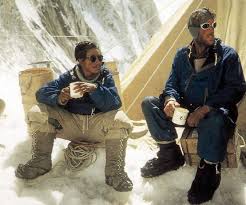The Haunting Legacy of Hannelore Schmatz, One of Everest’s Early Female Pioneers

The Haunting Legacy of Hannelore Schmatz, One of Everest’s Early Female Pioneers
Hannelore Schmatz, a German mountaineer and one of the earliest women to reach the summit of Mount Everest, remains a striking figure in the history of high-altitude climbing. In 1979, she became the fourth woman ever to stand on the world’s highest peak—an achievement that placed her among the elite pioneers of Himalayan exploration. Yet her triumph would soon turn tragic, leaving behind one of Everest’s most unforgettable and chilling stories.
On October 2, 1979, Schmatz successfully reached the summit with her climbing team after a demanding ascent up the southern route. The effort pushed her to the limits, and the descent proved far more dangerous than the climb. As the group made its way down through the Death Zone—a region above 8,000 meters where oxygen is scarce and temperatures regularly plummet—Schmatz became severely weakened.
Near the South Col, an exposed and windswept pass just below the summit, she could go no farther. Despite warnings that stopping in such conditions was fatal, she sat down to rest. Exhaustion and the extreme environment overcame her, and she died only a short distance from the safety of the camp.
For years after her death, climbers reported passing her frozen body, still seated upright, back against her backpack, hair drifting in the high winds. Her presence on the route became an eerie reminder of Everest’s unforgiving nature and the thin margin between glory and disaster.
In 1984, her remains finally disappeared—likely swept off the ridge by fierce storms or shifting ice. Although the mountain eventually reclaimed her, the memory of Hannelore Schmatz endured.
Today, she is remembered as both a trailblazer and a symbol of Everest’s peril. Her determination carried her to the summit, but the descent revealed the harsh realities of climbing at the world’s highest altitudes. Her story continues to remind mountaineers that Everest’s beauty is matched only by its danger—and that every ascent demands a profound respect for the mountain’s power.











